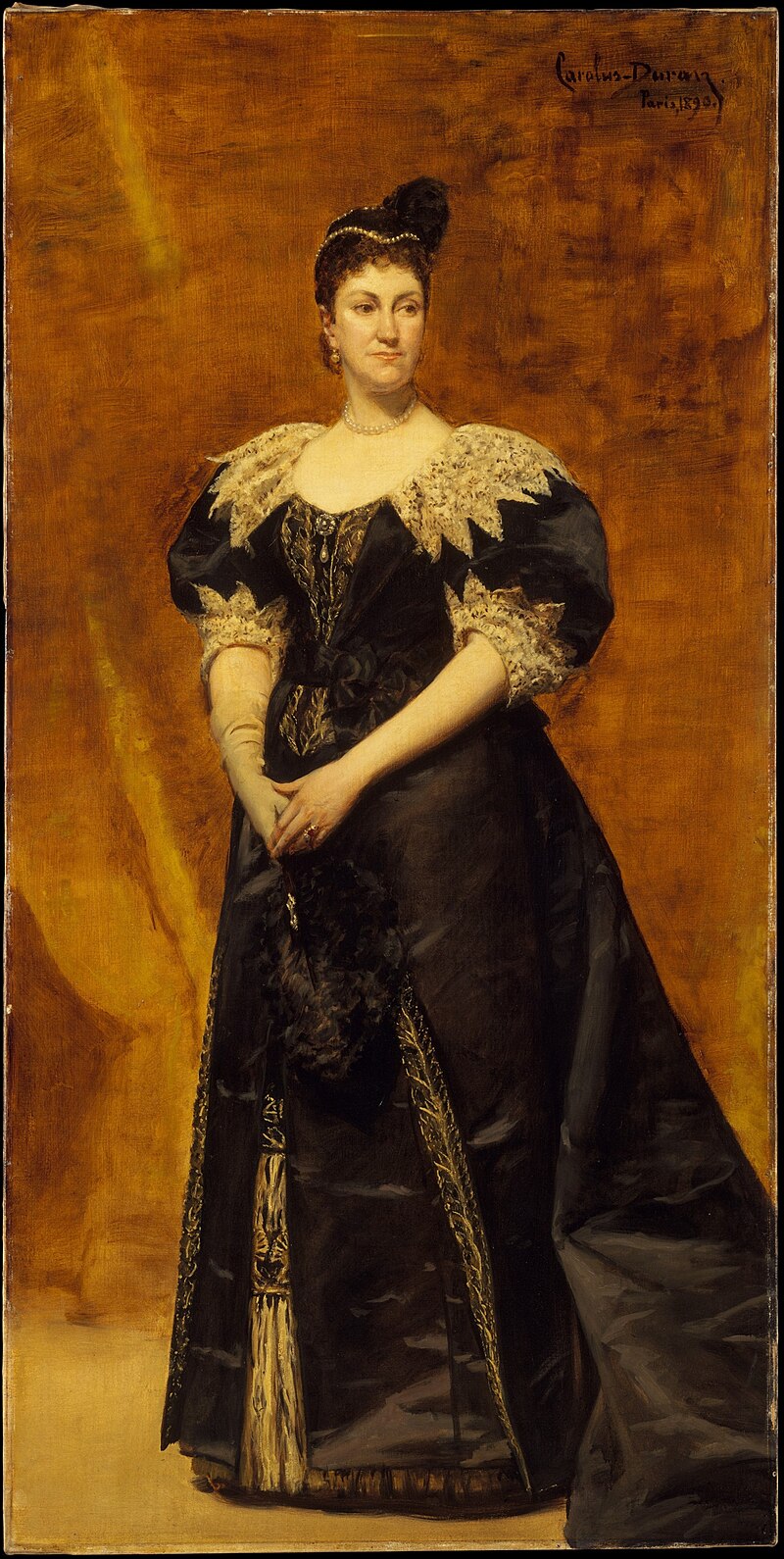The Rain (1830)
“The time has come for the Vanderbilts.” ~Caroline Schermerhorn Astor
America’s greatest fortune began with beavers. John Jacob Astor, from Walldorf, Germany, the son of a butcher, arrived in America in 1784. He wrote to his friend, “I AM mush presd for maney.” In the ensuing decades, John’s fortune -though not his spelling- improved. He amassed astronomical wealth by selling North American beaver pelts, a fashion favorite. Putting profit over humanity, he paid the indigenous trappers with alcohol, (cheaper than cash,) and used his profits to purchase seventy acres of Manhattan Island -still mainly farmland-that later transformed to Times Square, and a vast tract of land that extended from Broadway to the Hudson River. His son, John Jacobb Astor Jr. nicknamed The Landlord due to his vast holdings, leased his properties to slum-dwelling tenants. When the founder of a dynasty passed away, the erstwhile penniless immigrant was America’s first multi-millionaire. While John Jacob Astor made his family the modern Midas, it was his grandson that delivered social status.
Caroline (nicknamed Lina) was the youngest of eight children of Abraham and Helen Schermerhorns. The family’s shipping business and inherited wealth allowed them to amass a bank account of $5 million ($450 million in contemporary currency.) The family lived in Lafayette Place which was then the residential address where those of wealthy Knickerbocker descent formed the nexus of New York’s elite.
Governesses tutored the heiress in French and other areas that would allow her to make an advantageous marriage. On frequent trips to Europe, she absorbed the Old-World aristocratic culture. As a teenager, Caroline attended an elite school and studied dancing, etiquette and deportment. Her economic status, however, was not what allowed her to wield the scepter of the Gilded Age. What designated her as Queen Bee of the Gilded Age was her lineage. She was able to trace her ancestors as far back as 1636, when Jacob Janse Schermerhorn had arrived in Nieuw Amsterdam that segued to New York, (so called after the British Duke of York.) The heiress’s coming-out ball was the social event of the season.
At age twenty-three, Caroline met William Backhouse Astor II whose respective parents supported the match: Caroline had the cache and William had the cash. (At Caroline’s insistence, William dropped his middle name Backhouse) as she felt it was vulgar. Their 1853 marriage produced daughters Emily, (who died at age twenty-seven when giving birth,) Helen, Charlotte Augusta, Caroline “Carrie,” and son, John Jacob Astor IV. Jon went by his nickname Jack who the press referred to as Jack Ass-tor for his indifference to the poor.
Over time the adhesive of their relationship loosened, and the couple drifted apart. By 1870, William mainly lived on his own in his country retreat, Ferncliff, in the Hudson River Valley while Caroline entertained in their Fifth Avenue mansion. Free from his wife’s decorating touch, Ferncliff sported bearskin rigs, mounted hunting trophies, and paintings of his favorite racehorses. She welcomed William’s absences as although not as uncouth as his grandfather who, in lieu of a napkin, had wiped his mouth on a woman’s sleeve, he did not add anything to glitterati gatherings. As one gossip put it, if William did show up, he drank “everything in sight.” If her husband was in the city, she instructed his friends to keep him late at their gentlemen’s club so he would not make inappropriate remarks.
While his grandfather and father had been fixated with rising to the pinnacle of the financial hierarchy, the third generation William spent the Astor dollars on the pursuit of pleasure. One of his hobby’s was racehorses and his thoroughbred, Vagrant, won the 1876 Kentucky Derby. His other pastime were his yachts, and his first, Ambassadress was the largest in existence. His second, even more luxurious, was the Nourmahal that translates to “Light of the Harem.” The name was not a nod to whimsy as chorus girls provided on-board entertainment. The adultery proved painful for a wife preoccupied with propriety. When asked why she never joined her husband’s cruises, Caroline replied, “It is a great pity that I am such a bad sailor, for I should so much enjoy accompanying him. As it is, I have never even set foot on the yacht; dreadful confession for a wife, is it not?” One of William’s grandchildren described him as a “very trying and a disagreeable man” who busied himself in “affairs with second-rate women.” Adopting the philosophy of the three proverbial monkeys, Caroline stated, “I have been so fortunate in my marriage.”
Caroline’s days as the gadfly socialite, and that of the Gilded Age, changed in 1887 with the death of her sister-in-law, Charlotte Augusta Astor. At her passing, Caroline determined that she would no longer be known as Mrs. William Astor, but rather as Mrs. Astor. The perceived arrogance did not sit well with Charlotte’s only child, William Walorf Astor, who felt his wife should have that distinction. The slight bothered him to such a degree that he could no longer stand living in his townhouse that was next to his status stealing aunt. Consequently, in 1890, razed his estate and replaced it with a thirteen-story hotel he called Waldorf. For a year, Caroline had to endure the construction noise and fumes, and the horror of living next to a commercial enterprise. Acting on her son’s advice, Caroline leveled her home and erected her own hotel, three stories higher than her nephew’s, she named the Astoria. Eventually the two hotels united under the name the Waldorf-Astoria. In 1928, the stories hotel made way for the Empire State Building. Caroline moved to a new mansion at 65th Street and Fifth Avenue. Infuriated at being bested by his aunt, Waldorf decided to take his leave of the United States because it was “not a fit place for a gentleman to live.” He had purchased a thirteenth-century castle in whose walls an illicit affair had changed the course of history. King Henry VIII had visited Herver Castle to tryst with Anne Boelyn.
Believing her role akin to a divine right, Caroline wanted to ensure that the Knickerbockers remained the upper echelon. As the lioness of the gate, she excluded the nouveaux riche (swells) who tried to use their bank accounts to muscle into the sanctum of the nobs (the possessors of inherited privilege.) Undesirables included J. P. Morgan, the Vanderbilts, Rockefellers, and wealthy Catholics and Jews. (The society folk were Protestant and were members of the Episcopal Church.) If distinguished foreigners were in town, they received the coveted invitations. She brought out the Astor gold palates for receptions for Prince Louis of Battenberg, Prince Henry of Germany, and the Duke and Duchess of Orléans.
Newspapers reported on any tidbit they could regarding Mrs. Astor such as her favorite fragrance was a “sweet odor somewhat like wild lavender and garden roses mixed;” her favorite color was purple, and flower of choice were American Roses.
Her comrade-in-arms was dandy-about-town Ward McAllister, the scion of a wealthy Southern family, who, in befriending society women, was the Truman Capote of the Gilded Age. A reporter referred to the duo as the queen and prime minister of New York’s social domain. He coined the term “The Four Hundred” that lore holds referred to the number of guests who could fit into Caroline’s ballroom. He elaborated, “There are only about 400 people in fashionable New York society. If you go outside that number you strike people who either are not at ease in a ballroom, or else make other people not at ease.” Under his tutelage, Caroline surrounded herself with the trappings of European aristocrats. The Astor servants took to wearing uniforms adapted from those of Queen Victoria’s staff that entailed gold piping, knee breeches, and vests emblazoned with the newly minted Astor coat-of-arms. Upon McAllister’s passing, Caroline replaced him with man-about-town Harry Lehr, who the pressed dubbed King Lear, due to his histrionics.
The residence’s pièce-de-résistance of Caroline’s Manhattan residence resulted from a renovation: she turned stables into a ballroom that lent itself to The Four Hundred. The damask lined walls held innumerable paintings, many that bore portraits of the Sun God, King Louis XIV. The home’s retinue included a staff of eighteen servants, and when entertaining she hired an additional 125. Butlers served culinary creations, concocted by French chefs, on gold plates. Each place setting held different forks for salads, fish, vegetables, meats, and desserts, and knowing which one to use with what dish was mandatory. Gilded Age etiquette expert, Emily post, could well have used the phrase: “What would Mrs. Astor do?” Soirees commenced at 11 p.m. and, per protocol, she welcomed her court at the head of a receiving line while she stood under an oversized portrait of Caroline that she had commissioned from artist Carolus in Paris. At one dance, she wore a blue velvet dress and a tiara, earrings, necklace, and bracelets of diamonds. Her most famous necklace held an array of diamonds, arranged in several strands, that was said to have once graced the neck of Marie Antoinette. One of her diamond brooches had belonged to Empress Eugenie, another to King Louis XVI. When the last attendee had paid homage, the Mrs. Astor led them to the ballroom where she occupied a red silk chair, her variation of a throne. Unlike King Arthur’s Round Table, the Astors denoted rank-the closer to Caroline the nearer the queen. The highlight of the social season was her annual ball-held on a Monday in January.
Beechwood, the oldest of Newport’s “Cottages” encompassed five acres with the Atlantic Ocean as its backyard, was where Caroline spent the summer season. She had christened it Beechwood after the trees that stood sentry on the grounds. The villa had a foyer the size of a small church and afforded panoramic views of the Atlantic Ocean. The estate’s grounds held gardens that displayed fountains, flowers, and sculptures. The “cottage’ provided the venue for her summer ball held on the first day of July. Her daughter-in-law, Alva Astor, converted the entire third floor of Beechwood into a massive closet. Lore holds that Cole Porter composed “Night and Day” when he visited the estate when it was the property of her heirs; the estate had a cameo role in the 1956 film High Society starring Bing Crosby and Grace Kelly.
However, what really sent the media into a feeding-frenzy were the marriages of the Astor children. The eldest daughter, Emily, wed James John Van Allen. Helen wore a white satin dress with orange blossoms and old Belgium lace designed by the House of Worth in Paris for her wedding to James R. Roosevelt, half-brother of Franklin Delano Roosevelt. Charlotte’s first husband was attorney James Coleman Drayton; after their divorce, she wed British George Ogilvy Haig in London. Carrie was the wife of Marshall Orme Wilson. Only son, John Jacob Astor IV, was the chief recipient of his father’s will that made him one of the wealthiest people in the country.
After reigning for thirty years of Gilded Age society, Mrs. Astor grip loosened on her scepter such as when she allowed the arrivistic Vanderbilts entry into her orbit. Eventually, Mamie Fish and other younger women muscled in on her territory, providing entertainment over dinners where propriety dominated. In Mrs. George Westinghouse’s party, guests found $100.00 bill hidden in their napkins. One hostess concealed a black pearl in each of the oyster’s that were part of the menu that came with a price tag of $20,000, ($420,00today’s dollars.) At a third soiree, attendees dug through sand place in the middle of the table where the y unearthed party favors of diamonds, sapphires, and rubies. However, with the dawn of the new century, public opinion turned against “Let them eat cake mentality.” The Old Guard Caroline made a last-ditch effort to remain Queen Bee. In 1898, she invited dancer Isadora Duncan to perform on the lawn at Beechwood. Ms. Duncan later stated, “Mrs. Astor represented to America what a queen did to England.” She added of her audience, “These people seemed so enwrapped in snobbishness and the glory of being rich that they had no art sense whatever.”
In 1905, Mrs. Astor, (then a widow as William had passed in 1892) orchestrated her last ball. Six hundred guests such as Stuyvesant and Mamie Fish, William and Birdie Vanderbilt, filled her Fifth Avenue estate. The hostess appeared as glittering as ever in a purple velvet Worth gown, her black pompadour wig held a tiara, and her Marie Antoinette rope of diamonds flashed its eternal flame. However, after watching a few ballroom dances, before a sumptuous dinner, a weary Caroline retreated upstairs. The following year she underwent a nervous breakdown while in Paris. She immediately returned to Europe where she sought treatment at a German spa.
That summer revealed her condition when John announced his mother would not be opening Beechwood for the season. A few months later, the seventy-five-year-old Caroline stumbled as she was descending her marble staircase. Servants found her, her white hair awash with blood. Although she recovered physically, intellectually she was never the same as she succumbed to a growing senility.
Her Fifth Avenue fiefdom fell into an unaccustomed silence; where once the well-heeled walked, a skeleton staff, and her physician, Dr. Austin Flint, footsteps echoed. Engulfed in dementia, a granddaughter described her as “quite small and shrunken.” She added that her grandmother often confused her with her Aunt Helen, long since deceased, and that she held conversations with her long-lost siblings, all of whom had predeceased her. One of her sisters had wed John Treat Irving, the brother of author Washington Irving, author of Rip Van Wrinkle and The Legend of Sleepy Hollow.
In the mornings she consulted with Thomas Hade, her butler, discussing dinners and guest lists for phantom parties. Upon her return from her carriage ride through Central Park, she dressed in her gowns and jewels, and stood beneath her portrait, conversing with ghosts of parties past.
In 1908, John and his wife Alva, who had kept a bedside vigil the day before, had not been present at her passing caused by a heart condition that caused her to lapse into a comma from which she never awakened. Her death spared her the scandal and pain that lay in her adored son’s future. After divorcing Alva, with whom he had two children, at age forty-seven. John wed eighteen-year-old Madeleine Talmage Force Dick in Beechwood’s blue and gold ballroom. When Madeleine became pregnant in Europe, they decided to return to New York and booked passage on The Titanic. Other well-heeled passengers on board were Benjamin Guggenheim, scion of America’s richest Jewish family, and Isidor Strauss, founder of Macy’s Department stores. While Madeleine made it onto a lifeboat, John perished in the icy waters of the Atlantic Ocean. At the end, at age seventy-eight, the society hostess passed away in the presence of her three physicians and daughter Carrie. The Astor staff sent out several hundred telegrams to her friends throughout the country. Her funeral procession drew ten thousand who lined the sidewalk of Fifth Avenue as they bid farewell to the society hostess as well as an era.
The advent of World War I drew the curtain on the Age of Excess, and the doors of the mansions in Manhattan, the Hudson Valley, and Newport shut. However, for auld lange syne, with the passing of the Mrs. Astor, the Gilded Age flew its flag at half-mast.
Although Caroline was a public figure, she was a private person, and that is partially why she remains inscrutable. She had a horror of photographers who wanted to take her picture, and whenever she went out in Newport, she wore a veil. In Julian Fellowes’s HBO series, The Gilded Age, he alluded to her characteristic of holding people at a distance. In one scene Marian Brook was riding in a carriage with her two blue-blood aunts when she asked about the doyenne of Manhattan, “Do you like Mrs. Astor?” One aunt responded that Mrs. Astor was a fact of life, “That is like saying, ‘Do you like the rain?’”


